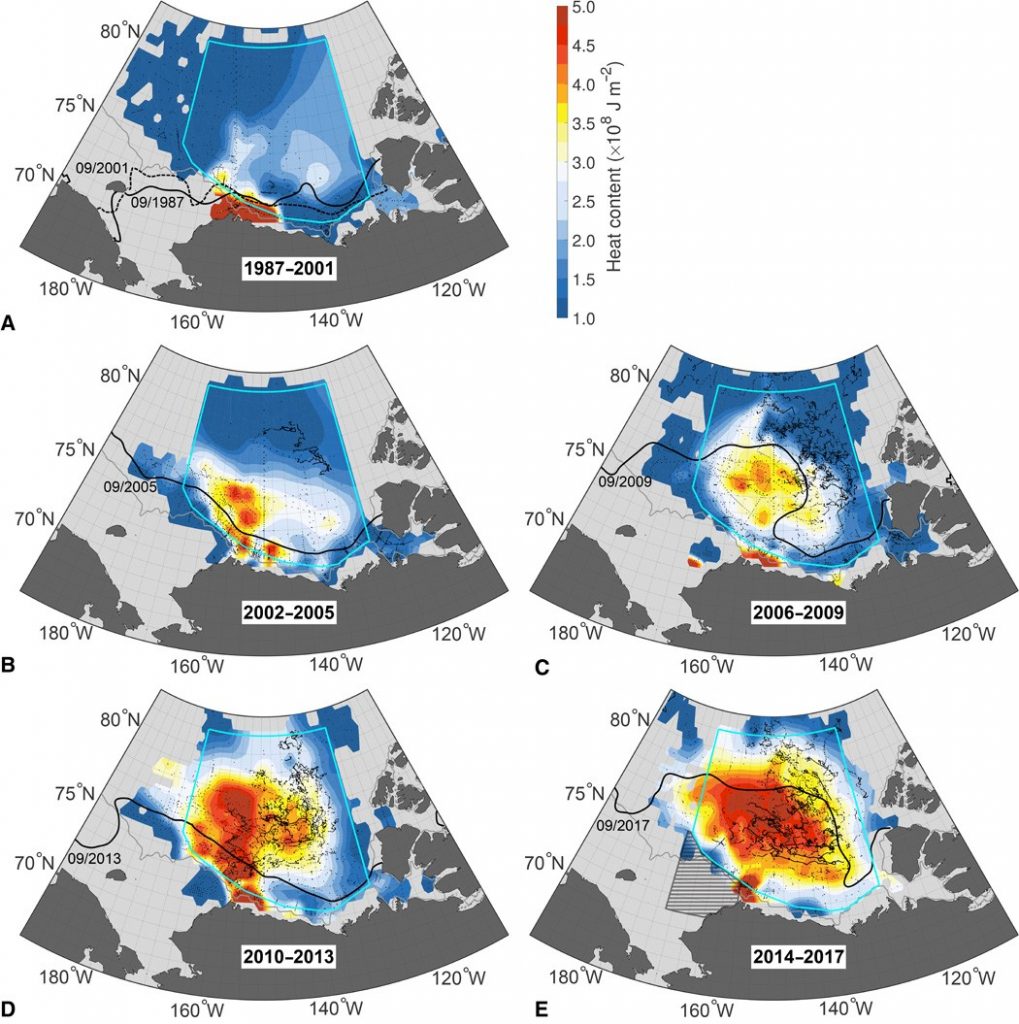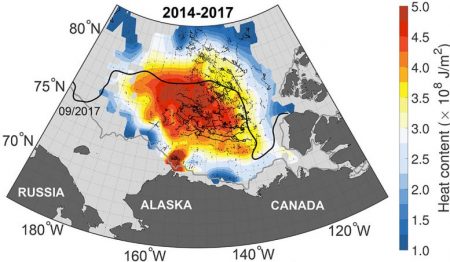August 31, 2018 – A new research paper appearing in the journal Science Advances reports that Arctic Ocean heat content has nearly doubled in the last 30 years. The warming is linked to summer solar heating of the ocean surface waters because of reduced sea ice coverage. Combined with surface water subduction this warming is migrating by ocean currents into the heart of the Arctic under the permanent sea ice that covers the North Pole.
The implications are obvious. If you warm the water below pack ice you will see it melt leading to thinning. Over time this changes the dynamics of sea ice. The thinner the permanent sea ice, the more likely it can be impacted by underlying warming as well as by wind and wave action along its edges.
The study comes from Yale University where lead author Mary-Louise Timmermans, Professor of Geology and Geophysics, describes the area of focus being the Canadian Basin of the interior Arctic Ocean. She is quoted stating, “the effects of sea-ice loss are not limited to the ice-free regions themselves, but also lead to increased heat accumulation in the interior of the Arctic Ocean that can have climate effects well beyond the summer season.” She further points out that “there is enough heat to entirely melt the sea-ice pack that covers this region for most of the year.”
In the study, it reports that before the 2000s, heat content of Arctic Ocean water was half the value it is today. The Beaufort Gyre, a wind-driven ocean current that is responsible for moving both seawater and ice across the Arctic Basin is the mechanism for heat transfer. The amount of heat being pushed under the Arctic sea ice “equates to a change of about 0.8 meters (2.6 feet) in thickness.
What the study further points out is there has been a marked change in the defined area of the Arctic Ocean separating warmer water from the south from the cool water of the Arctic Basin. That warmer saltier water, as it moves north, is pushed down by the less saline colder Arctic Ocean water. The motion of the Beaufort Gyre is then transferred below the surface with the warmer water migrating under the sea ice where it does what warm water does when exposed to ice. It melts it.
The discovery of this mechanism explains to some degree why surface sea ice in the Arctic has been decreasing over the last three decades. But it is not the only mechanism at work because once sea ice disappears, solar heating in the summer impacts Arctic Ocean surface waters even more which then further contributes to seasonal sea ice loss.
This study, along with another done by the National Snow and Ice Data Center and University of Colorado, which I wrote about just a little more than a week ago describing the appearance of open water north of Greenland this year, point to an Arctic Ocean that could become ice-free at the North Pole by 2050.










